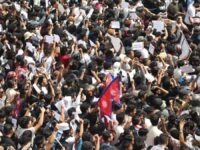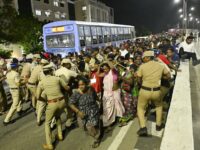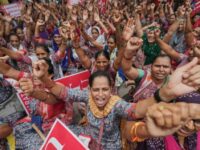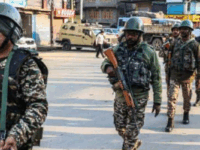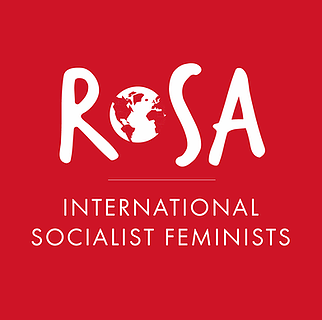Historic “Hartal” Grinds Sri Lanka to a Halt
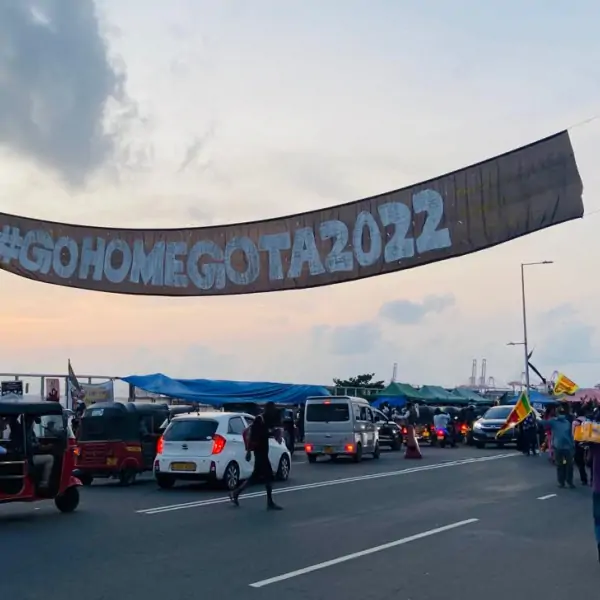
Responding to a joint appeal issued by over 2,000 trade unions, a countrywide ‘Hartal’ (total strike) brought Sri Lanka to a halt today, Friday 6th. The hartal, the largest in 69 years, was a resounding success. The Railway Joint Trade Union Alliance stated that all train services had been suspended since midnight; some 18,000 private buses stayed put for the whole day — only leaving their services open for groups of people who wanted to join the protests within a distance of 20 kilometers. The country’s Immigration and Emigration Officers’ Association suspended all VIP services due to the strike, the first time it ever happened in Sri Lankan history. Schools, banks, and government offices were closed; hospitals were run for emergency only; construction sites were brought to a standstill in all the main cities; industrial workers from the Free Trade Zones came out of their factories in large numbers while farmers, plantation workers, port workers, fishing communities and many others also joined the strike movement en masse.
Key commercial areas such as Fort — the country’s main trading hub in Colombo— were completely shut down and the closure of entire streets of stores and small businesses could be observed all around the island, from the Tamil-majority city of Jaffna in the north all the way down to the southern town of Rathanapura, where President Gotabaya Rajapaksa had received over 60% of the votes in the 2019 presidential election. Tens of thousands of people, enraged at the devastating economic crisis, took to the streets in many cities and towns demanding the Rajapaksas’ and their government to “go home”.
In Colombo, numerous cars and tuk-tuk drivers expressed their solidarity with the Hartal and the anti-government protests with honks, black and Sri Lankan flags and homemade banners with slogans aimed at the ruling family, against which a deep and generalized mood of rejection has developed. Many street protests popped up in an improvised fashion at different corners of the city. On the evening before the strike, protesters led by the Inter-University Students’ Federation blocked the main access road leading to the parliament, demanding all 225 MPs to resign, after a ruling coalition-backed candidate was elected deputy speaker on Thursday. While the Rajapaksas are the main focus of the masses’ anger, many understand indeed that the entire political establishment is hopeless and has no solution to fix the country’s escalating crisis. As a young protester said, “Gota should go but he is the symbol of a system, so not only the Rajapaksas should go home — all the thieves should go home”.
After a first unsuccessful police attempt to break down that street occupation by force, the place became a new encampment site for protesters, baptized ‘HoruGoGama’ (“Go home thieves’ village”, echoing the name of the first occupation site, ‘GotaGoGama’, gathering thousands every day outside the Presidential building) — which families with children, young people including many young women, workers, trade unionists and people from many walks of life have joined since in solidarity. Water bottles and food packs have also been handed over in abundance by supporting residents.
Home-made placards read “We are not poor — we were robbed”, “We want our stolen money back”, “Rajapaksa go to hell”, “End state terror”, “Power to the people”… Some protesters hung their underwear on the barricades to display their contempt at the country’s ruling class. Noel, a university lecturer and local union organiser, summed up the reasons people were on the streets: “They spent lavishly for themselves. Millions of dollars. But people are suffering without gas, without fuel — we can’t buy bread, rice, anything…we can’t afford food anymore, we can’t survive.” Later in the afternoon, the police assaulted the peaceful crowd with tear gas and water-cannon, but the protesters reoccupied the place, undeterred and more determined than before.
The main trade unions at the initiative of the strike have stated that if the Rajapaksas do not budge after today’s one-day Hartal, a continuous one would start from the 11th of May. Since then however, the President has declared a state of emergency to try and placate the movement by force, granting the police and military sweeping powers of arrest and detention. This is already the second time in five weeks that a state of emergency is declared — the last one was withdrawn amid a furious counter reaction from the streets. As the social basis of the regime has melted amidst the unfurling economic mayhem, and the mass movement is on the upswing, it is not impossible that this move could precipitate a political denouement at the expense of the current ruling clique. This threat should nevertheless be taken very seriously and responded swiftly and in kind. The trade union and protest movements cannot wait until next week to mobilise and prepare for an all-out Hartal, and to organise proper defense committees on all protest sites and workplaces in order to be ready to face the state repression that is likely to be leveled up in the coming days.
ISA stands in full solidarity with the historic uprising of the Sri Lankan masses against the rotten and violent rule of the Rajapaksas. This struggle should be deepened and cannot stop at getting rid of the current regime. It should aim at its past and present enablers, nationally and internationally, and at the capitalist system that is responsible for the growing misery experienced by millions in Sri Lanka as throughout the world. We stand for a socialist government of working people and poor farmers, that would refuse to pay one more rupee of the country’s debt, reject any new austerity-driven deal with the IMF, take over the Rajapaksas’ wealth along with the main economic levers of the country into public hands, and plan resources democratically to respond to the real needs of the population.

